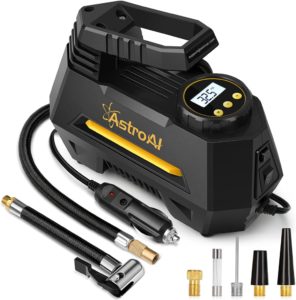What is a Tire Pressure Monitoring System in a BMW 8 Series?
The BMW 8 Series is renowned for its elegance and refined design, and among its numerous cutting-edge features is the Tire Pressure Monitoring System (TPMS). This system persistently monitors the pressure of each tire, ensuring they are not underinflated or overinflated. If any discrepancy in tire pressure is detected, the TPMS promptly notifies the driver. Continue reading if you’re interested in learning more about how the tire pressure monitoring system in your BMW 8 Series operates, the process to reset the warning light, and the most frequent reasons for the light to activate!
How to Reset BMW 8 Series Tire PRessure Warning Light:
2018 – PRESENT (G14/G15/G16/F91/F92/F93)
Select CAR on the Idrive infotainment screen
Select VEHICLE STATUS
Select TIRE PRESSURE MONITOR
Select TIRE SETTINGS
Choose the correct TIRE TYPE (choose summer or winter if you swap tires for different seasons)
Select SAVE TIRE SETTINGS
If you are swapping between winter and summer tires, follow the same steps but select PERFORM RESET after selecting the season.
Drive your BMW 8 series!
Everything in this article is applicable to all BMW 8 Series versions and models including M competition versions. (840d, 840i, 850i, M850i, M8)
How Does the BMW 8 Series TPMS Work?
Continuously monitors tire pressure: The BMW 8 Series TPMS consistently tracks the pressure levels in all four tires.
Uses built-in sensors: Each tire is equipped with a sensor that measures pressure and relays the information to the vehicle’s onboard computer.
Compares pressure to optimal levels: The system checks the current tire pressure against the recommended pressure levels for the BMW 8 Series.
Notifies the driver: If the pressure in any tire deviates from the recommended range (found on the driver side door jamb, the yellow sticker), the TPMS sends an alert to the driver through the instrument panel or iDrive screen.
Pinpoints the affected tire: The system identifies which tire has the pressure issue, allowing the driver to address the problem quickly and effectively.
Enhances safety and performance: By maintaining the ideal tire pressure, the BMW 8 Series TPMS helps ensure a smooth and secure driving experience, as well as improved fuel efficiency and tire lifespan.
When to Reset BMW 8 Series TPMS:
• Following tire replacement: New tires might have different pressure levels compared to the old ones. Always double check!
• Post tire rotation: Ensuring accurate monitoring of each tire’s pressure in their new positions.
• Transitioning between seasonal tires: When switching from summer to winter tires or vice versa.
• Adjusting tire pressure: In situations where you’ve changed the pressure to accommodate different loads, such as carrying or towing heavy weight.
• After tire inflation: Once you’ve inflated your tires to the appropriate pressure upon receiving a low-pressure warning.
• Installing a new sensor: If a damaged or faulty sensor needs to be replaced.
• TPMS issues: In case the TPMS shows an error message or is not working correctly.
• Following wheel services: After completing rotations, balances, or alignments.
• During routine maintenance: As part of your vehicle’s regular care and service.
• Post software update: When your car gets an update specifically related to the TPMS.
Common Causes for Tire Pressure Lights in BMW 8 Series to Come On:
• Low tire pressure: The most common cause for the tire pressure light to turn on is when one or more tires have pressure below the recommended level.
• Rapid pressure loss: A sudden drop in tire pressure, often caused by a puncture or leak.
• Temperature fluctuations: Changes in ambient temperature can affect tire pressure. This can cause the TPMS light to turn on if the pressure falls outside the acceptable range (this is very common!).
• Faulty TPMS sensor: A malfunctioning or damaged TPMS sensor can cause inaccurate readings.
• Dead sensor battery: TPMS sensors are powered by batteries (watch batteries) which will eventually die, usually lasting around 5 to 7 years.
• High tire pressure: Overinflating your tires can also cause the tire pressure light to come on.
• Tire damage: Physical damage to the tire such as sidewall bulges/bubbles, cuts, or cracks, can cause pressure changes and trigger the tire pressure light. Older tires can also start losing air.
• Wheel/rim damage: In BMWs, wheel cracks causing air leaks are a very common issue. This happens from things such as pot-holes or big bumps.
• Spare tire: Driving with a spare tire or donut on the car that does not have a sensor (for those without run-flats).
• Recent tire service: If the TPMS wasn’t reset properly after tire rotation, installation, or inflation.
• Malfunctioning TPMS control module: A faulty TPMS control module may not process sensor data correctly.
• Seasonal tire changes: Not resetting the TPMS when switching between summer and winter tires.
• Dead or jump-started battery: After replacing or jump-starting your vehicle’s battery.
What Happens When Your BMW 8 Series Tires are Underinflated?
When the tires on your sleek BMW 8 Series become underinflated, the premium driving experience you’ve come to appreciate may suddenly feel compromised. Driving with underinflated tires not only impacts the smoothness and stability of your ride but also heightens the risk of tire damage, uneven tire tread wear, and possible blowouts. Consequently, your vehicle’s fuel efficiency takes a hit, and your once-exemplary road experience becomes clouded by the fact that your tires are now yearning for air! This is why the TPMS is there! So fix your tire pressure and get back to the refined driving experience that the BMW 8 Series is known for!



